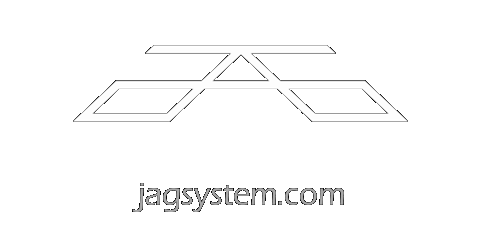
Automating a harvester to operate autonomously, using sensors such as GPS, cameras, LIDAR, and others, is an ambitious and technically challenging project, but it is entirely feasible with the right tools. You mentioned using OpenPilot, as well as considering ROS (Robot Operating System) and ROSGPT to achieve autonomy. I will explain how these tools can be used, their advantages and limitations, and how they can integrate into your harvester automation project.
Understanding the Context and Tools
1. OpenPilot
OpenPilot is an open-source system originally developed for vehicle automation, focused on advanced driver assistance (ADAS) and autonomous driving. It is widely used in cars, such as those from Comma.ai, and supports sensors such as cameras, GPS, and in some cases LIDAR. OpenPilot is designed for tasks such as lane keeping, adaptive cruise control, and highway navigation, using deep learning to interpret sensor data and make decisions in real time.
In the context of a combine harvester, OpenPilot can be useful for a number of functions, such as:
Field navigation: Using GPS and cameras to follow predefined paths or crop maps.
Obstacle detection: Identifying obstacles (such as trees, rocks, or workers) with cameras and LIDAR.
Steering control: Automatically adjusting the direction of the combine to follow crop rows or avoid detours.
However, OpenPilot has limitations for its use case:
It was designed for road vehicles, not agricultural machines, which operate on uneven terrain and have specific tasks, such as harvesting crops accurately.
It is not optimized to manage complex actuators of a combine, such as cutting, collection, and grain storage systems.
It may not be robust enough to handle the variability of an agricultural environment (changing terrain, crop types, weather conditions).
So while OpenPilot can be a starting point for basic navigation and control, it will need significant adaptations to meet the specific needs of an autonomous combine harvester.
2. ROS (Robot Operating System) https://github.com/aniskoubaa/rosgpt
ROS is a widely used robotics framework that provides a set of tools and libraries for developing complex robotic systems. It is not an operating system in the classic sense (like Linux), but a middleware that facilitates communication between different components of a robot, such as sensors, actuators, and control algorithms. ROS runs on an operating system such as Ubuntu (I recommend Ubuntu 20.04 with ROS Noetic or Ubuntu 22.04 with ROS 2 Humble for greater compatibility).
ROS is extremely useful for your project for several reasons:
Sensor integration: ROS has native support for GPS, cameras, LIDAR, and other sensors. Packages such as gps_common, camera_info_manager, and velodyne_pointcloud (for LIDAR) allow you to process data from these sensors efficiently.
Autonomous navigation: ROS offers the navigation package (or nav2 in ROS 2), which includes algorithms such as SLAM (Simultaneous Localization and Mapping) and AMCL (Adaptive Monte Carlo Localization). This allows the harvester to create maps of the environment, locate itself in the field, and plan trajectories.
Actuator control: ROS can manage the harvester’s motors and mechanical systems (such as the cutting or lifting system) using packages such as ros_control.
Modularity: ROS allows you to divide the system into independent nodes. For example, one node can process LIDAR data, another can plan the path, and another can control the harvester’s speed.
Community and support: ROS has an active community and many ready-to-use packages, such as move_base for navigation and rviz for visualization.
3. ROSGPT
ROSGPT is an integration of ChatGPT with ROS, designed to translate natural language commands (such as “move 1 meter forward”) into instructions that ROS can execute. It is useful for human-robot interaction, but is not essential for full autonomy of the combine. In your case, ROSGPT could be used for:
Initial setup: Allowing an operator to give simple commands, such as “follow the corn row to the left”, which ROSGPT would translate into instructions for ROS.
Debugging and testing: Making it easier to interact with the combine during development, without having to manually write code for each test.
However, for an autonomous combine, ROSGPT has limited utility, because autonomy implies that the machine operates without constant human intervention. ROSGPT is most useful in scenarios where there is frequent interaction with a human operator, which does not seem to be the main focus of your project.
How ROS Can Help Combine Harvester Autonomy
ROS is the best choice to make your harvest more efficient autonomous harvester, especially since it can handle all aspects of the project: from sensor integration to path planning and control of mechanical systems. Here is a general plan of how to use ROS to achieve autonomy:
1. Sensor Integration
GPS: Use the nmea_navsat_driver package to obtain location data. This will allow the harvester to know its position in the field and follow a predefined map or a dynamically generated path.
Cameras: Use packages like usb_cam or image_pipeline to process images. You can use computer vision (with OpenCV, which is well integrated with ROS) to detect crop rows, identify ripe crops or avoid obstacles.
LIDAR: Use packages like pointcloud_to_laserscan to convert LIDAR data into 2D or 3D maps. This is essential for detecting obstacles and creating maps of the environment.
Other sensors: Sensors such as inclinometers (for uneven terrain) or moisture sensors (for crop assessment) can also be integrated into ROS with custom drivers.
2. Autonomous Navigation
SLAM: Use the gmapping or cartographer package to create a map of the field as the combine moves. This is useful if the environment is not fully known or if the map needs to be updated in real time.
Path planning: The nav2 package (in ROS 2) or move_base (in ROS 1) can plan optimized trajectories for the combine, avoiding obstacles and following crop rows. You can use GPS data to set waypoints and LIDAR data to avoid collisions.
Localization: The amcl package can help the combine locate itself on the map based on LIDAR and GPS data.
3. Combine Control
Direction and Speed: Use ROS to send commands to the combine’s motors, adjusting the direction and speed based on the planned path. The ros_control package can help you create controllers for the motors.
Harvesting System: Create nodes in ROS to control the actuators of the harvesting and harvesting system. For example, you can use cameras to detect when the crop is ripe and automatically trigger the harvesting system.
Safety: Implement an emergency stop system that disables the combine if a critical obstacle (such as a person) is detected by LIDAR or cameras.
4. OpenPilot Integration
OpenPilot can be used as an additional layer for navigation and obstacle detection, but it will need to be integrated with ROS. Here’s how it can be done:
Sensor data: Configure OpenPilot to send data from its cameras and GPS to ROS, using ROS messages (such as sensor_msgs/Image for images and sensor_msgs/NavSatFix for GPS).
Control: Use OpenPilot’s control algorithms (such as lane keeping) as a ROS node, which can send steering commands to the combine’s control system.
Adaptation: Modify OpenPilot to handle the specifics of a farming environment. For example, instead of following road lanes, it should follow crop rows, which may require adjustments to OpenPilot’s deep learning models.
5. Full Autonomy
For the combine to be fully autonomous, you will need:
Predefined maps: Use GPS data to create maps of the field with harvest areas. ROS can load these maps and plan trajectories automatically.
Decision-making: Implement algorithms that decide when to harvest, based on data from cameras (e.g. detecting crop maturity) and LIDAR (avoiding obstacles).
Fault management: Create a recovery system to deal with faults, such as very uneven terrain or faulty sensors. ROS can help monitor the system status and take corrective actions.
Role of ROSGPT
ROSGPT can be useful during development and testing, but is not essential for autonomy. Here are some scenarios where it can help:
Initial testing: You can use ROSGPT to send simple commands to the combine, such as “move 2 meters forward” or “turn 90 degrees to the right”, without having to write manual code.
Interaction with operators: If the combine needs human supervision at times (e.g. to start harvesting in a new area), ROSGPT can translate voice or text commands into actions in ROS.
Debugging: During development, ROSGPT can help test different parts of the system, such as asking the harvester to “check LIDAR” or “show camera image”.
However, for autonomous operation, ROSGPT is not needed, because the harvester must operate without human intervention. ROS alone, with well-configured algorithms, can handle all navigation, harvesting, and safety tasks.
Advantages and Challenges
Advantages of Using ROS
Flexibility: ROS can integrate all its sensors and actuators into a single system.
Community: There are many tutorials, packages, and support available for ROS, including for precision agriculture.
Scalability: You can start with basic navigation and add more functionality (such as optimized harvesting) over time.
Challenges
Learning curve: ROS has a significant learning curve, especially if you are not familiar with Linux, Python, or C++ (the most commonly used languages in ROS).
Hardware: Make sure the harvester has an embedded computer powerful enough to run ROS and process sensor data in real time (I recommend a computer with Ubuntu 22.04, at least 8 GB of RAM, and a GPU for computer vision).
OpenPilot integration: Adapting OpenPilot to an agricultural environment and integrating it with ROS may require significant code adjustments.
ROS vs. ROSGPT
ROS is essential for autonomy, as it provides the necessary tools for navigation, control, and sensor integration.
ROSGPT is optional and more useful for human interaction during development or supervised operation.
Practical Recommendations
Start with ROS 2:
Use ROS 2 Humble (compatible with Ubuntu 22.04) as it is more modern and has better support for real-time systems.
Install ROS 2 and familiarize yourself with the basic concepts, such as nodes, topics, and messages.
Set up Sensors:
Connect GPS, cameras, and LIDAR to ROS and test each sensor individually.
Use rviz to visualize sensor data (such as LIDAR maps or camera images).
Implement Navigation:
Use the nav2 package to set up autonomous navigation.
Create a field map with SLAM or use a predefined map based on GPS data.
Adapting OpenPilot:
Modify OpenPilot to detect crop rows instead of road lanes.
Integrate OpenPilot with ROS, using ROS messages to share data and commands.
Automate Harvesting:
Use computer vision to detect ripe crops and activate the cutting system.
Configure ROS to control the combine’s actuators (motors, cutting system, etc.).
Test with ROSGPT (optional):
If you want to use ROSGPT, configure it to translate simple commands into actions in ROS.
Use it for initial testing or for interaction with operators.
Validate Safety:
Implement emergency stop systems to prevent accidents.
Test the combine in a controlled environment before using it in a real field.
Conclusion
Yes, ROS is extremely useful for automating your combine and making it autonomous. It can integrate all your sensors (GPS, cameras, LIDAR), plan trajectories, avoid obstacles and control the combine’s mechanical systems. OpenPilot can be used as an additional layer for navigation and obstacle detection, but it will need adaptations for the agricultural environment and integration with ROS.
ROSGPT, on the other hand, is not essential for autonomy, but it can be useful during development and testing, allowing you to interact with the harvester using natural language. To achieve full autonomy, the focus should be on ROS, with well-configured algorithms for navigation, harvesting, and safety. I recommend starting with ROS 2, configuring sensors and navigation, and then integrating OpenPilot and harvesting systems. With patience and testing, you can create an efficient and safe autonomous harvester. If you need help with a specific step, such as configuring a sensor in ROS or writing a navigation script, I can help you!

